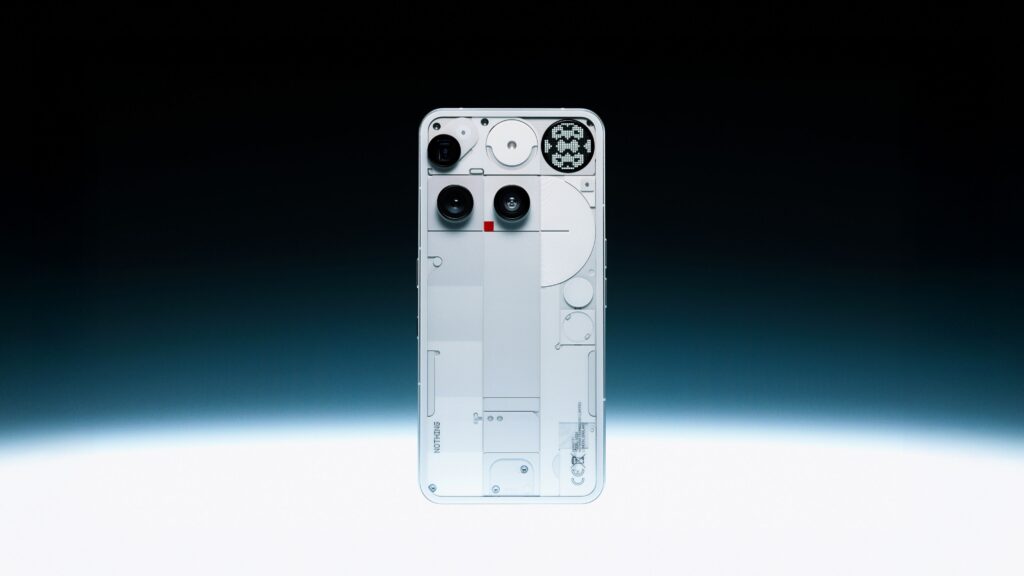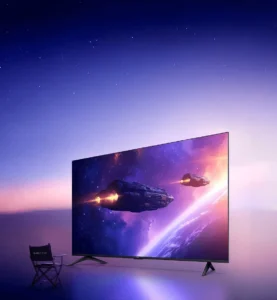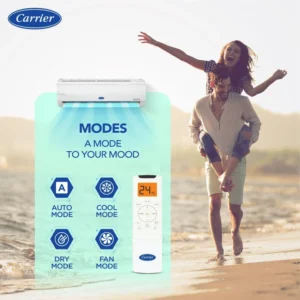Nothing Phone 3 Review: Is This Unique Flagship Right For You?
The “Nothing” company, they’ve been around for about five years now, starting with earphones, then dabbling in more affordable smartphones. But the Nothing Phone 3? This is their first real swing at a “flagship” phone. And when you decide to charge $799, you’re not just playing in the minor leagues anymore. You’re directly up against the big guns: Samsung’s Galaxy S25 and Apple’s iPhone 16, both of which, coincidentally, also start at that exact price point. So, the question, really, is quite simple: Is the Nothing Phone 3 actually better? It’s a bit of a mixed bag, to be honest.
| Pros | Cons |
|---|---|
| Excellent battery life, likely outlasts competitors. | Design can feel a bit unfinished or “spotty.” |
| Fast charging (65W). | Glyph Matrix is less iconic and doesn’t fully solve notification context. |
| Impressive camera system (all 50MP sensors). | Chipset performance is significantly lower than top-tier flagships. |
| Clean, bloatware free Nothing OS. | Display uses LTPS tech, impacting battery slightly (but still good overall). |
| Long software update promise (5 years OS, 7 years security). | Glass protection (Gorilla Glass 7i) is not top-tier. |
| Useful rear camera selfie preview. | Speakers are decent but not as rich as competitors. |
Design and Build: A Transparent Gamble?
For a while now, I’ve actually been a pretty big fan of Nothing’s transparent aesthetic. It’s unique, it’s bold, and it usually just, well, vibes with me. But with the Phone 3, something feels a little different. This is, perhaps, the first time I’ve seen a Nothing phone that hasn’t immediately clicked. It looks a bit… spotty, I might say. You’ve got half an NFC coil peeking out here, some strange spacing between various components, and then there’s the camera placement – it’s almost aligned with another element, but it’s just a tiny bit off. It all gives me a bit of an “unfinished prototype” energy, which is a shame given their usual attention to detail.
Materially speaking, Nothing has made some strides, but they’re still a little behind the curve, perhaps. You now get an IP68 rating for water and dust resistance, which is absolutely what you’d expect on a flagship phone. The mid-frame is made from aluminum, just like its peers, which is good. But the glass protecting the front is Gorilla Glass 7i. Now, this is actually a mid-range alternative to the much stronger Victus 2 glass that you’d find on, say, Samsung’s S25. So, if you’re prone to dropping your phone, the Nothing Phone 3 might not take a fall quite as well as some of its competitors.
One small detail I do genuinely like, however, is the recording light. It turns on when you’re capturing voice or video. It could probably be a tad brighter, but in concept, I think it’s just courteous to let other people know when they’re being recorded. Plus, it’s functional. The whole idea of this phone is that you can put it face down to avoid distractions. So, imagine being in a meeting you’re also recording; you could just glance down to double check that the recording is still going. That’s a thoughtful touch, I think.
- Aesthetic: Transparent design, but some elements appear “spotty” or “unfinished.”
- Durability: IP68 water and dust resistance, aluminum mid-frame.
- Glass: Uses Gorilla Glass 7i, which may be less durable than competitors’ Victus 2.
- Recording Light: A small but useful feature that indicates when recording is active.
The Glyph Matrix: A Second Screen, But Is It Better?
Part of this very unique design is, of course, meant to accommodate one of the phone’s most distinctive features: the Glyph Matrix. Remember those individual light bars on the backs of previous Nothing phones? Well, they’re gone. All their functionality has been, in a way, bottled into this new system. The Glyph Matrix is essentially 489 individual LEDs, or, if you want to think about it another way, it’s basically a tiny second screen. We kind of predicted this, to be honest. It was becoming clear with past Nothing phones that there was a limit to how much information you could convey with just light strips. Sure, they could light up for a pending notification, or you could even set specific contacts to trigger a unique pattern so you’d know who was trying to reach you with your phone face down. That was clever.
But those lights, they could never give you any context about the notification. You’d never really know if it was actually important without flipping the phone over, which, you know, defeats the entire purpose of having it face down in the first place. So, is the Glyph Matrix better? My opinion is, well, mixed. My very first thought was that I didn’t really like it. The old Glyph lights, despite their flaws, were iconic and felt incredibly cool. This new matrix, it’s just a screen, and we’ve seen plenty of phones with screens on the back before – often bigger, higher resolution, and in color.
However, my opinion did improve a little once I started interacting with it. One thing you can usually rely on Nothing doing is putting in the work on the software side. So, while the hardware of this matrix might be a bit underwhelming for 2025, you’re getting Nothing’s software curation. At any given time, the matrix can display one “widget” or “glyph toy,” as they call them. You tap a hidden capacitive glyph button (it requires a little pressure until you feel a vibration) to cycle through these. It reminds me a bit of Apple’s Force Touch. You can then hold that button to interact with the selected toy.
As I messed around, I saw a clock, which is something previous Nothing Phones couldn’t do. There’s even a stopwatch, which is probably just about faster to use than opening the main clock app. Nothing is also opening this matrix up to the community, so I’m sure we’ll see even more unique little applets cooked up down the line, like a leveler tool already created by the community.
But then, I’ve thought about it even more, and I’ve gone full circle. I’m back to where I started: I’m not a big fan of the Glyph Matrix. I think it’s less cool and less different compared to the original lights, and so far, at least, it doesn’t really fix the core limitations. What’s the full list of glyph toys? You’ve got battery percentage (I can’t remember the last time I wanted to know my battery percentage when I’ve specifically put my phone down to avoid looking at it). You’ve got “spin the bottle” and “rock paper scissors” – I’m glad they’re having fun, but who’s challenging their phone to rock paper scissors? And who’s playing spin the bottle where the best bottle to use is a 50-pixel wand on someone’s glyph matrix?
The glyph toys aren’t everything, of course. The Matrix also interacts with things you do while actively using your phone. This stuff varies pretty wildly, from completely useless (like how the LEDs expand and contract based on volume, I mean, who’s looking?) to acting as a torch (but a much dimmer, less evenly spread one than the old glyphs). In a future update, you’ll supposedly be able to see the caller ID by long pressing the glyph button, which, to me, makes no sense. It takes the same amount of time to just turn your phone around and check, and that way you can also answer if you want to.
There are some things about it that are not useful, but still cool, like the “Nothing Signals.” These are Nothing-style ringtones and notifications that are a complete package: sound, haptic feedback, all paired with an accompanying animation on the glyph matrix. It’s very satisfying. And then, I would only say there’s one thing that is actually very useful: the ability to use this second screen as a preview for your rear cameras to take full quality selfies. But then, if you think about it, what I’m really saying is that the best feature of the glyph matrix is something every past phone with a second screen has already done, and often better.
There are also improvements to “essential notifications.” You know how you can set a few contacts or message types that are important enough to give you a notification when your phone is flipped over? Well, now you can assign a profile picture specific to each of those contacts. But, yeah, you can see why it doesn’t actually fix the problem. Even if I can see their picture and know if it’s “Jeremy” or “David,” there’s still a very wide range of messages each could send. So I still have to fully check the message on the front of the phone to decide if it’s one of the truly important ones. So, really, the two most unique things about this phone, the design and the Glyph Matrix, I’m not in love with either. And I don’t think either is a very good reason to choose this over an iPhone or a Samsung.
- Glyph Matrix: 489 individual LEDs, functions as a tiny second screen.
- Evolution: Replaces previous Glyph lights, aiming to provide more context but falls short.
- Interaction: Controlled by a hidden capacitive button with pressure sensitivity.
- Features: Displays widgets (clock, stopwatch, community apps), “Glyph Toys” (battery, games).
- Mixed Utility: Some features are cool but not practical (volume indicator, dim torch); selfie preview is useful but not unique.
- Notification Context: Improved with contact pictures, but still doesn’t provide enough information to avoid flipping the phone.
Core Phone Fundamentals: Performance and Display
If the unique design and Glyph Matrix aren’t strong enough selling points, then the Nothing Phone 3 really needs to excel at the phone fundamentals to compete. So, let’s start with some potential red flags.
The chipset Nothing has gone for is the Snapdragon 8s Gen 4. Now, this is not the very highest-end Snapdragon 8 Elite that Samsung, for example, uses in its top models. Plus, there’s no real mention of any kind of advanced cooling system. While Nothing has been pretty good so far at picking a sensible middle-ground chip and doing a lot of software work to get the most out of it, there’s no way it won’t be significantly outperformed by Samsung in a head-to-head. We’re talking a 30 to 40% performance lead for Samsung. So, if you’re into graphically intensive phone games, or if you’re a power user who constantly pushes their phone to its limits, then this difference might already write off the Phone 3 for you.
The display, on the other hand, is very much a flagship screen in terms of color reproduction and brightness. It’s fantastic. The screen also has exactly the same pixel density as the iPhone 16, so it’s incredibly sharp. The only thing is, Nothing’s display relies on slightly cheaper LTPS tech as opposed to the LTPO tech found on Samsung and most other Android phones at this price. In practice, this doesn’t make the display look any worse. However, it means that while Samsung can dial its refresh rate all the way down to 1Hz for extreme power saving, the Phone 3 can only go as low as 30Hz. So, this might be a bit of a hit to battery life, though as we’ll see, it doesn’t seem to be a deal-breaker.
- Chipset: Snapdragon 8s Gen 4 (good, but not top-tier flagship performance; 30-40% less than competitors like Samsung).
- Display Quality: Flagship-level color, brightness, and sharpness (same pixel density as iPhone 16).
- Display Tech: Uses LTPS (vs. LTPO), meaning refresh rate only goes down to 30Hz (vs. 1Hz on some competitors), potentially impacting battery life slightly.
| Nothing Phone 3 Specifications (Key Highlights) | |
|---|---|
| Price (Starting) | $799 |
| Processor | Snapdragon 8s Gen 4 |
| Water & Dust Resistance | IP68 |
| Front Glass Protection | Gorilla Glass 7i |
| Battery Capacity | 5,150 mAh (marketed as 5,500 mAh in India due to regulations) |
| Charging Speed | 65W wired |
| Operating System | Nothing OS 3.5 (based on Android) |
| Software Updates | 5 years major Android upgrades, 7 years security updates |
| Rear Cameras | All 50MP sensors (Main, Ultrawide, 3x Telephoto) |
| Front Camera | 50MP sensor |
Battery Life and Charging: A Standout Feature?
This is where things start to turn around for the Nothing Phone 3, I think. Even with that slight hit from the display tech, it’s pretty safe to say this phone will likely outlast an iPhone 16 or a Samsung Galaxy S25. The Phone 3’s battery capacity is a generous 5,150 mAh. This compares quite well to Samsung’s 4,000 mAh in its standard flagship. Now, on one hand, the Phone 3 is a bigger phone, so of course it has a bigger capacity. It’s actually more similar in size to the S25 Plus, which has 4,900 mAh. But then, the S25 Plus starts at $999. So, if you compare the Phone 3 to what Samsung gives you at the $799 price point, I would expect the Phone 3 to outlast them pretty significantly.
I used the Nothing Phone 2 for quite a while, and its battery life was outstanding. Everything about this phone makes me think it’s going to last pretty much as long as that. It might even last longer if all you’re doing is casual browsing and watching YouTube and not really pushing that chip. However, it’ll probably be about the same if you’re doing mixed usage, including some demanding stuff like camera use and gaming.
There is one slightly weird thing: this same phone is being marketed as having 5,500 mAh of battery in India. Just to address that, no, they haven’t created two different versions with different dimensions and weights. It’s actually the same battery inside. It’s just that there’s a software limitation being put on it in some countries because if the battery capacity goes above a certain amount, it can be classed as a “dangerous good,” which can make shipping costs go crazy. So, the end battery life you get should be the same regardless of the number on the box. You really shouldn’t be having battery problems, especially since the phone can charge with a speedy 65 watts of power, compared to Samsung’s 25 watts. That’s a noticeable difference.
- Large Battery: 5,150 mAh capacity, expected to offer excellent endurance.
- Competitive Edge: Likely to outlast similarly priced flagship phones from Apple and Samsung.
- Fast Charging: Supports 65W wired charging, significantly faster than some competitors.
- Marketing Nuance: Same physical battery globally, but capacity may be listed differently in some regions due to shipping regulations.
Audio and Software Experience: Clean Android with AI Touches
The Phone 3 has dual speakers. Based on my very early first impressions, they’re not spectacular, but they’re certainly decent for a flagship phone. They’re perhaps not quite as rich as the ones you’d find on an iPhone or a Samsung, but they do the job.
Software is where this phone becomes a bit more of a unique offering. The Phone 3 runs Nothing OS 3.5, which is basically a very slightly tweaked version of the Nothing OS you might have already seen. This, in turn, is essentially a mostly untouched version of Android, with the only changes being purely aesthetic. While it’s very difficult to compare it directly to Samsung’s One UI, which is immensely more customizable, I do think Nothing OS is one of the best ways to experience Android. I like that your icons aren’t screaming for your attention. There are some parts of the UI that are quite unconventional and, in my opinion, very beautifully laid out. And the biggest thing? It’s completely bloatware free. That’s a huge plus.
The only truly unique features of Nothing OS are “Essential Space” and “Essential Search.” Essential Space, to me, feels a bit half-baked – it’s a way to keep track of things you need to remember, but it has a bit of a learning curve. Essential Search, however, is completely new this time around. You swipe up from the bottom of your screen to quickly get to anything. The idea is very similar to your phone’s universal search, but it’s just a little bit broader. It can solve math problems directly in the search box. And if you ask questions, it’ll use a tweaked version of Gemini AI to give you short, concise answers for those random quick lookups. It’s a good idea, I think. I’m all about having to go into each app less because one app does more.
One thing Nothing has definitely done better this time around is their update promise. It’s now 5 years of major Android upgrades and 7 years of security updates. While not quite matching Samsung’s 7 years of full Android upgrades, that’s plenty, especially considering how minuscule the actual upgrades are becoming now. So, the Phone 3’s software feels like a pretty solid, clean, and well-supported experience.
- Speakers: Dual speakers, decent but not top-tier.
- Nothing OS: Clean, near-stock Android experience with unique aesthetic touches and no bloatware.
- Essential Search: New universal search with on-device math solving and quick AI answers (powered by Gemini AI).
- Software Support: Strong update promise of 5 years of Android upgrades and 7 years of security updates.
Cameras: The Unexpected Highlight
The Phone 3 feels like a bit of a mixed bag so far, with some things I like and some I don’t. But where it really seems to shine, surprisingly, is the cameras. Every single camera sensor on the Phone 3 – the main, the ultrawide, the 3x telephoto, and even the front camera – is a 50-megapixel sensor. Just for context, that compares to something like 50, 10, 12, and 12 megapixels on a Samsung flagship. Now, megapixels are not everything; don’t pay too much attention to them. But using the camera for a short period, it feels to me like each one of these cameras is also just better than what you might get on a Samsung.
The ultrawide, which is usually where you first notice images falling apart, looks pretty detailed to me. The three times telephoto camera has a much more sizable sensor than the one on some competitors. And I like that when you get past 30 times zoom, it will activate AI super resolution. Yes, it’s a very gray area on if it then counts as a “photo” at that point, but I like having the option, at least. And I particularly respect that this telephoto camera is also what you use to take your macro shots. This means, unlike having to shoot your close-ups using your ultrawide camera like you do on most phones, you don’t have to shove this phone super close to your subject and block out all the light. You can now focus from 10 centimeters away instead of 15, like you could the last time Nothing had this feature. Although, I have to say, this is a very funny example of marketing, because while they’re telling you it can focus even closer, the reason for that is actually a smaller sensor than last time. They have reassured me, though, that even then, the photo quality from this telephoto should still be better just because of processing. So, overall, the cameras seem to be a real strong point.
- All 50MP Sensors: Main, ultrawide, 3x telephoto, and front cameras all feature 50-megapixel sensors.
- Improved Quality: Image quality appears better across all lenses compared to some competitors.
- Telephoto Macro: The 3x telephoto lens handles macro shots, allowing for closer focus (10cm) without getting too close to the subject.
- AI Super Resolution: Activates for extreme zoom levels (beyond 30x).
Who Should Buy the Nothing Phone 3? (And Who Shouldn’t)
Overall, nothing about the Nothing Phone 3, at least right now, is truly blowing me away. It feels like all of the actually unique things about it have a lot to prove. And aside from that, all of the core pillars of a flagship phone feel well covered, but not necessarily exceeded. That said, what is it up against at this $799 price point? I guess a bunch of other flagships that also aren’t really pushing the boat out. So, when you match it up side by side, I still think it compares quite well, but it also doesn’t feel like that instant no-brainer that some past Nothing phones have been.
Who Should Consider Buying It:
- Camera Enthusiasts: If camera versatility and quality are your top priorities, especially the all-50MP setup and telephoto macro, this phone might genuinely impress you.
- Battery Life Prioritizers: If you need a phone that will consistently last you a long day (or more) and charges quickly, the Phone 3 looks very promising.
- Fans of Clean Android: If you appreciate a near-stock Android experience without bloatware, and enjoy unique aesthetic touches in the OS, Nothing OS is a strong offering.
- Value-Conscious Flagship Seekers: If you want flagship-level features in key areas (like display and camera) without breaking the bank for a top-tier Samsung or iPhone, and are okay with slightly less raw performance.
- Those Who Value Software Support: The 5 years of OS upgrades and 7 years of security updates are a solid commitment.
Who Might Want to Look Elsewhere:
- Hardcore Mobile Gamers: If you primarily use your phone for graphically intensive games, the Snapdragon 8s Gen 4, while capable, won’t match the raw power of the absolute top-end chips from competitors.
- Performance Junkies: If you demand the absolute bleeding-edge in processing power and benchmark scores, you might find other flagships offer a noticeable performance lead.
- Traditional Flagship Design Preference: If you prefer a more conventional, less “experimental” design, or if the Glyph Matrix doesn’t appeal to you, its unique aesthetic might not be a draw.
- Those Needing Absolute Best Durability: While IP68 is great, the Gorilla Glass 7i might be a slight concern for those who are particularly rough on their phones.
Key Takeaways and Summary
The Nothing Phone 3 marks the company’s first true flagship offering at the $799 price point, putting it in direct competition with established giants. Its design, featuring a transparent back and the new Glyph Matrix, aims for uniqueness but receives mixed reviews, with some elements feeling unfinished and the Matrix not fully solving the problem of notification context.
In terms of core performance, the Snapdragon 8s Gen 4 chipset is capable but lags behind top-tier competitors, making it less ideal for heavy gaming. However, the phone shines with its impressive battery life (5,150 mAh) and fast 65W charging. The display offers flagship-level quality, though its LTPS tech might slightly impact battery compared to more advanced LTPO panels.
The software experience, Nothing OS 3.5, provides a clean, bloatware-free Android interface with unique aesthetic touches and a strong update promise (5 years OS, 7 years security). The cameras are a standout feature, with all 50MP sensors delivering excellent quality, including a versatile telephoto lens that doubles for macro shots.
Ultimately, the Nothing Phone 3 is a compelling option for those who prioritize exceptional battery life, a clean software experience, and a versatile camera system, all wrapped in a distinctive design. However, if cutting-edge raw performance for gaming or a more traditional, refined aesthetic are your main drivers, you might find other flagships more suitable. It’s a phone that carves its own path, and whether that path is for you depends on what you value most in a smartphone.





